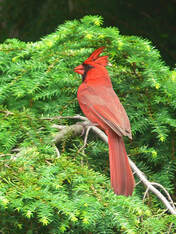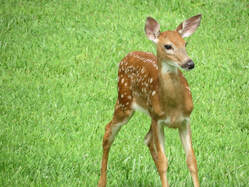 A few weeks ago, I re-watched one of my favorite movie series. I knew the DVD for the last Signed, Sealed, Delivered movie would be arriving soon, so I decided to go back to the beginning and watch the entire set of DVDs again. (For me, owning DVDs of select movies is like owning paper copies of my favorite books. I have a Kindle for reading, but I still prefer to own a hard copy.) Romance writers often use movies as examples when discussing core writing concepts. A well-written movie script can be immensely educational for a writer of books. While it usually is not my original intent when watching a movie, I sometimes find myself assessing the pacing or the character arcs. The same held true as I watched this series. The Signed, Sealed, Delivered movies were created by Martha Williamson (from Touched by an Angel fame) and were released by Hallmark. I am thankful for that, because they are well-done without an excess of violence or other stuff which might prevent a viewer from enjoying the stories. Or in my case, from also analyzing the stories. In particular, I was struck by how well the script writers allowed the story arcs to develop over time. There are twelve movies, plus one season’s worth of hour-long TV episodes from early in the timeline. Each of the four main characters has their own growth arc, and there are also romance arcs. As a writer myself, I enjoy watching how these arcs unfold. I especially appreciate that the arcs are allowed to develop slowly, organically. The writers don’t rush the characters toward a dramatic or emotional milestone just to generate some contrived “feel goods” with the audience. The arcs develop naturally, but they are there. Another takeaway for me is that all writers share some commonalities. Whether creating movies or books, we use similar techniques to produce very different outputs. As a novel writer, it is instructive to watch movie examples, especially a series, to hopefully strengthen my own writing. Particularly since my historical romances also tend to become a series. One which started as a stand-alone story about a widow in Colorado in the late 1890s has turned into a series of six books based on various characters. So I guess spending time on the couch watching a movie is actually time well spent. In fact, writing this has inspired me to go find another favorite movie to watch. Who knows what I might learn from the next one? Do you have a favorite movie to recommend?
1 Comment
 This week, I have found myself watching a surprising amount of wildlife here in the city - even more than I typically noticed in our prior country home. Dog-sitting for my son has added a fun fillip of excitement to the activity. Since I do much of my writing while ensconced in one of the comfortable chairs in our den, I often lift my head whenever I see a flash of motion outside our patio doors. Sometimes, it’s a cardinal flying by or a robin hopping around on our yard. (Note to self: ask daughter-in-law for suggestions on types and locations of bird feeders when they return from vacation.)  Yesterday, I noticed my son’s dog was staring intently out those same doors, and caught a glimpse of a young buck dodging evergreen branches to rest under our neighbor’s tree. (The dog, Atlas, really wanted to go out and make friends. I’m sure that wouldn’t have gone over well.) I also spotted our neighborhood doe with two cavorting fawns in that same yard. (It’s probably just as well Atlas was sleeping then.) Later, I saw a bigger buck lounging under a different evergreen by the front corner of our house. It was a little disconcerting to see a deer with a large 8-point rack staring calmly back at me from about twenty feet away. I know there is other wildlife on our block, too. Something has been digging small holes in our yard. Since my mother suggested that it might be skunks looking for grubs, I plan to stay away from them. Far, far away. Fortunately, skunks are not something I see on my walks in the neighborhood. But I did have a close encounter last week with a red-tailed hawk who swooped by at waist level directly in front of me. I was surprised to see that, like the deer, he apparently has lost most of his fear of humans. And of course, there are the bunnies and chipmunks. It’s a good thing my son’s dog looks but doesn’t race after them if he sees one on our walks. Atlas is a mastiff mix, and could probably drag me off my feet if he wasn’t such a sweet dog. Is all of this wildlife normal in the city? I suppose it is. Having lived in the country my entire life before this, it’s a novel question for me to consider. For many other people, the animals are likely common, part of the background we tend to ignore. At any rate, I am almost looking forward to winter, when I’ll be able to see all of their tracks criss-crossing a smooth, snow-covered lawn. Who knew I’d see more wildlife in the city than I did in the country?  It has been very hot and sticky here the last few weeks, which has increased my consumption of ice cream. As I was eating a bowl of butter pecan last night, I started wondering about the history of ice cream. What were its origins? This morning, I did a little quick research to find out. The results were fascinating. Did you know it dates back to at least 200 B.C.? Alexander the Great reportedly enjoyed snow and ice flavored with honey and nectar in ancient Greece. According to Biblical references, King Solomon liked to consume iced drinks during the harvest. And the Roman emperor Nero is thought to have sent slaves into the mountains to fetch back snow which was then mixed with nectar, fruit pulp and honey.  The first dish which more closely resembled today’s ice cream was made by the Chinese during the Tang Dynasty (618-907 A.D.) using heated milk, flour and camphor. Ice cream gradually made its way to Europe (with help from Marco Polo) and from there to the New World. The first recorded account of it in North America was in 1744. The governor of Maryland served a dessert which, according to a guest’s account, was “a Dessert…Among the Rarities of which is Compos’d, was some fine Ice Cream which, with the Strawberries and Milk, eat most deliciously.” Ice cream quickly became very popular in America, numbering George Washington and Thomas Jefferson among its ardent admirers. In fact, George Washington is said to have spent $200 (a lot of money back then) for ice cream during the summer of 1790 and Thomas Jefferson’s personal recipe for ice cream is shown in the picture on the right. Fast forward through the years, and ice cream continued to be very popular. The first ice cream soda (and soda fountain) were created in 1874. Interestingly, the ice cream sundae was invented in the 1880s because of religious strictures against consuming “sinfully rich” ice cream sodas on Sundays. So someone took out the carbonated water, poured some chocolate syrup on top, and voila, the ice cream “Sunday” was invented. Several towns have said they are the sundae’s birthplace. However, the two locations with the strongest claim are Two Rivers, Wisconsin and Ithaca, New York. These two cities are still politely arguing the point. (I have to vote for Two Rivers, being a Wisconsin gal myself.) Ice cream even served as a morale booster during WWII. Though dairy products were rationed back home, each branch of the military served as much of it as they could to the troops overseas. It was such a uniquely American symbol at that point, Mussolini even banned it in Italy during the war. After the war, when the dairy rations were lifted, Americans eagerly risked brain freeze to dive into bowls of ice cream again – averaging over 20 quarts per person in 1946. Today, in addition to the many forms of ice cream available in grocery stores, there are many specialty ice cream shops and restaurants to satisfy true aficionados. Which is a good thing. Because when it is hot and muggy outside, a big bowl of ice cream goes down really, really well. The only downside is choosing a flavor. |
AuthorI write historical fiction, and I invite you to share the journey to published author with me. Archives
December 2022
Categories |
 RSS Feed
RSS Feed
